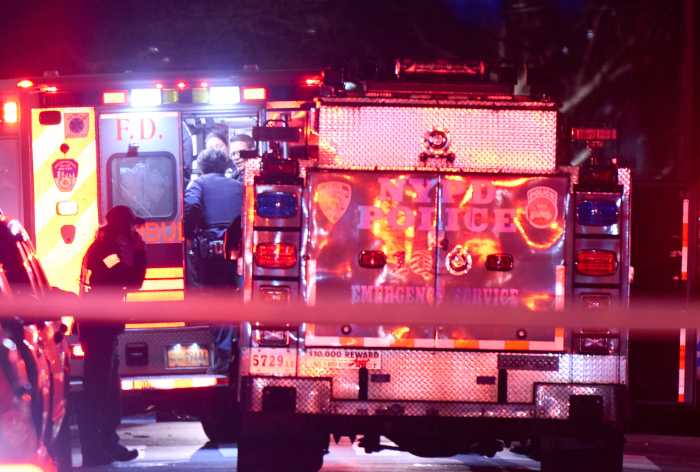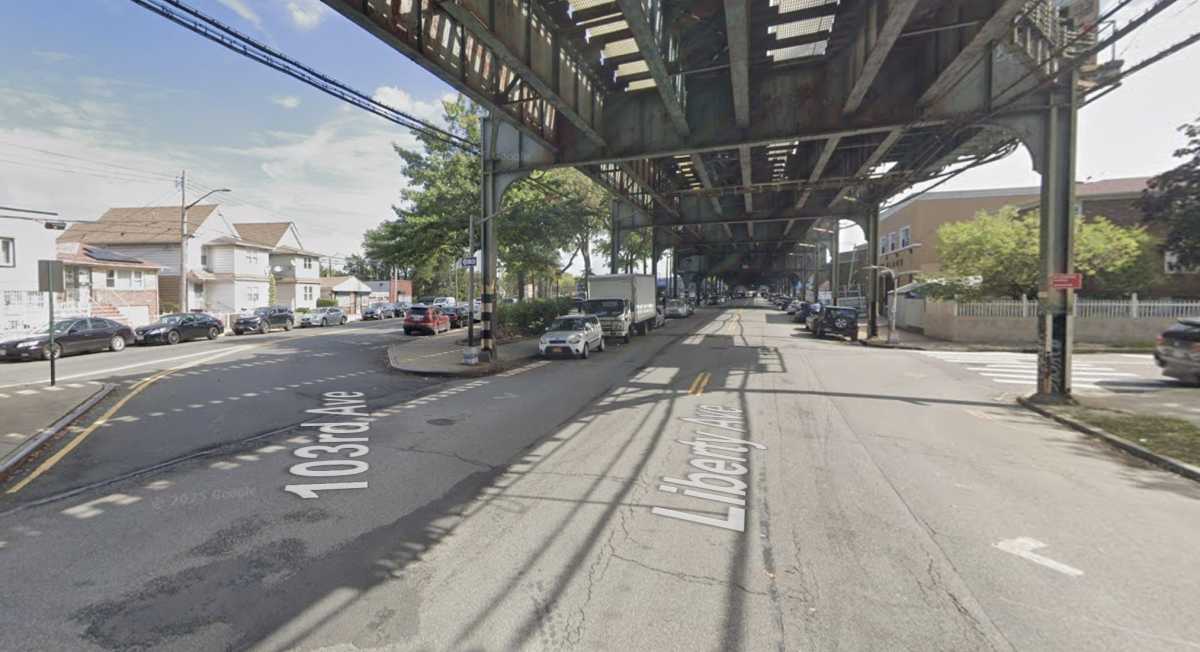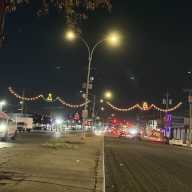
Ricky’s NYC closed its 30-83 Steinway location in April (Photo: Queens Post)
Aug. 8, 2019 By Allie Griffin
According to a new report on storefront vacancy, Astoria has a healthy and robust retail economy with a 9.5 percent overall vacancy rate.
The report released by the Department of City Planning studied recent retail trends and storefront vacancies throughout the city by surveying shopping corridors in 24 neighborhoods across the five boroughs.
Fallas at 31-08 Steinway St. closed in 2018 (Photo: Queens Post)
The study focused on continuous, pedestrian-oriented shopping corridors, and studied trends from late 2017 to fall 2018.
The report, titled Assessing Storefront Vacancy in NYC, found that the vacancy rate varied widely in Astoria on a street by street basis–with Steinway Street struggling most.
The section of Steinway Street between Broadway and 30th Avenue had a whopping vacancy rate of 18.1 percent, according to the report. Meanwhile, along Steinway Street–between 35th Avenue and Broadway– it was 14.1 percent.
The report notes that the decline in “dry retail” stores that sell items like clothing, furniture and electronics has contributed to the higher number of empty storefronts on Steinway.
Meanwhile, the vacancy rate on 30th Avenue–between Crescent Street and Steinway Street– was a modest 7.5 percent. The strip has become a restaurant corridor– similar to Broadway.
Astoria’s case study illustrates the larger retail trends observed in the report citywide. New Yorkers are buying their dry goods online as opposed to at retail stores, but are frequenting restaurants, bars and local services in growing numbers.
Astoria’s 9.5 percent was the seventh lowest of the 24 neighborhoods analyzed.
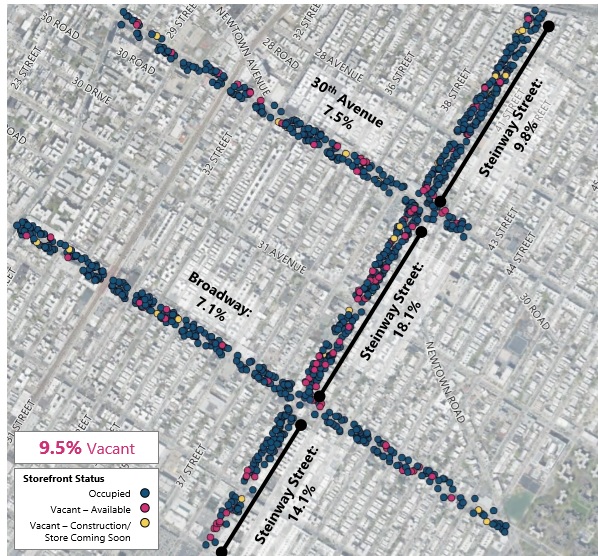
Report: Assessing Storefront Vacancy in New York
Jackson Heights’ retail scene proved to be the most bustling of the neighborhoods studied, with a vacancy rate of just 5.1 percent.
The neighborhood’s shopping corridor studied in the report included Roosevelt Avenue, 37th Avenue and Junction Boulevard.
The study found that while some neighborhoods have higher concentrations of vacancies, there is no overall trend city-wide. Reasons for these vacancies also differed based on neighborhood demographics and market trends and couldn’t be attributed to a single factor, according to the report.
A 5 to 10 percent vacancy rate is generally considered to be “healthy” by the industry, according to DCP.
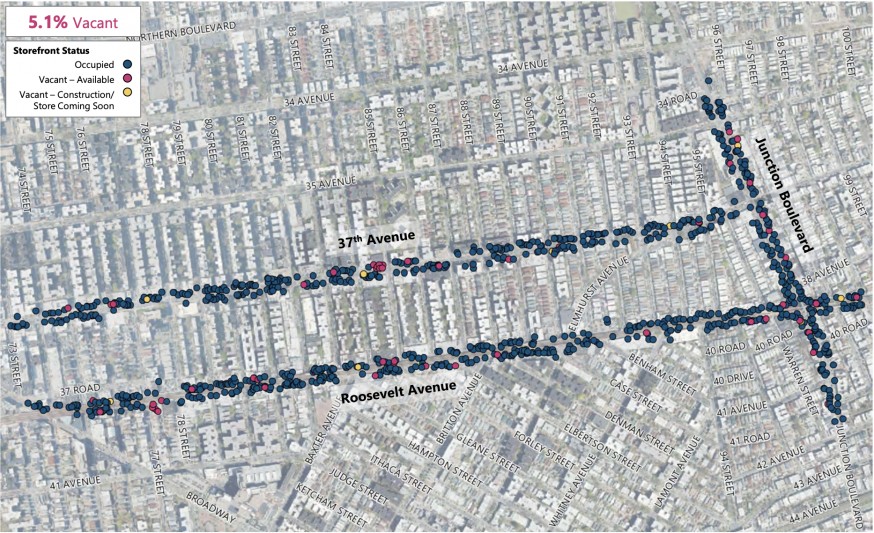
Jackson Heights | DCP




